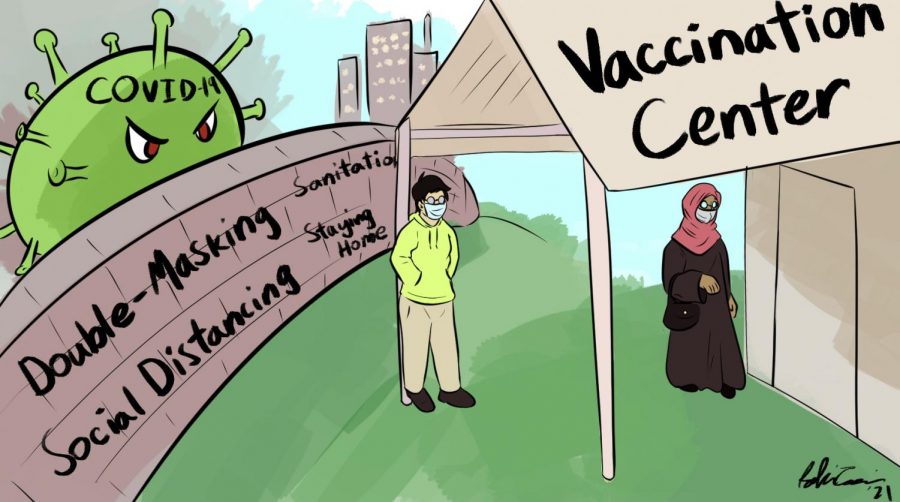Editorial: Vaccine distribution not a pass for reckless behavior
Everyone must follow health, safety practices, resist urge to socialize
February 25, 2021
As we round a corner in the fight against the coronavirus with the distribution of vaccines, we must stay on this track by remaining vigilant and practicing social distancing, mask-wearing, and hand hygiene in order to accelerate a return to normalcy.
Since the approval of Pfizer-BioNTech and Moderna vaccines last December, the United States government has issued nearly 152 million doses, according to the Centers for Disease Control and Prevention. President Joseph Biden pledged to further the former Trump administration’s efforts by setting a goal of 1.5 million vaccines distributed each day for the first 100 days of his presidency.
Even with vaccine distribution in full swing, recent concerns have emerged that the structure of mutant strains could limit their effectiveness.
Sars-CoV-2, the virus that causes COVID-19, is a single-stranded RNA virus, meaning whenever the virus replicates, there is a high probability of mutation, according to the National Center for Biotechnology Information.
The mRNA vaccines such as those produced by Pfizer and Moderna target Sars-CoV-2 by teaching human cells to recognize and dispose of proteins produced by an infected cell, according to the CDC.
Existing vaccines, however, rely on the assumption that proteins made by hijacked cells remain the same. Nearly 15% of all proteins created by ribosomes contain some translational error, however, which changes the protein entirely and results in a mutant strain, according to the CDC.
Should a mutant strain become extremely prevalent, it could reduce the effectiveness of current vaccines.
“If the virus replicates enough, namely, when there’s a lot of infection in the community and in the world, you get mutations that do impact the virus’s function,” U.S. Chief Medical Adviser Anthony Fauci said during The Washington Post Live’s live stream on vaccine distribution and COVID-19 mutations. “It could ultimately evade or avoid the protective effect of both monoclonal antibodies and the antibodies that are induced by a vaccine.”
With vaccine distribution in full effect, the temptation of socializing as if things were normal is surely more tantalizing than ever. This virus will likely not endanger the lives of most healthy teens should they contract it, and those around them who suffer more severely are being vaccinated.
Everyone must remember, however, that this pandemic is not over.
The California Department of Public Health has not, and for the foreseeable future will not, relay details on vaccinating teens.
Additionally, the Pfizer and Moderna vaccines are only available for 16 and 18 years-olds, respectively, which complicates vaccine distribution.
It is safe to assume teens will not receive such vaccines for a while.
In the meantime, teens and young adults must continue to be careful, understanding that with every new case of COVID-19, the possibility of a more deadly strain emerging increases — threatening all the progress we have sacrificed so much for.







